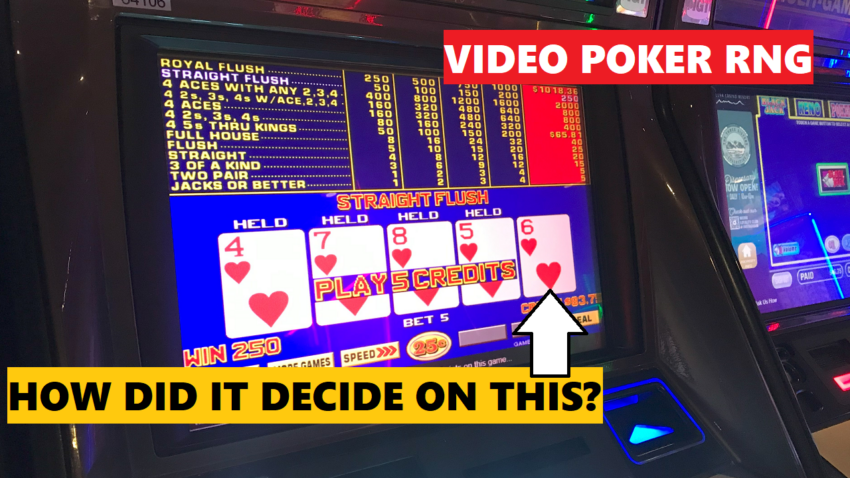Video poker machines use a random number generator (RNG) to shuffle and deal cards face-up from a virtual 52-card deck onto your screen, similar to how slots use an RNG to pick which symbols each reel would stop on. Today, I am going to show you how I think this is actually done. For the first part, I will explain the process step-by-step using a physical deck of cards. After that, I will share the evidence using save states on an emulator. Let’s get started!
THE RNG IN ACTION
The RNG starts generating random numbers the moment the machine is turned on and it generates these numbers multiple times per second, regardless if the machine is idle or if it is actively being played. Think of the RNG as the thing that “shuffles” the cards while it waits for a player to sit down and press the “deal” or “bet max” button. Once a game begins, the machine will take the RNG numbers generated at that moment and use those to reveal to you the initial 5 deal cards. After that, the RNG continues to “shuffle” the remaining 47 cards while you make your decision on which cards to hold and which to discard. Once you hit that “draw” button, the machine takes the RNG numbers generated at that moment which correspond to the replacement cards. This means that it is likely that you would have had a completely different result if you waited an extra second longer to hit the draw button, or if you had hit the button a second earlier.
AN EXPERIMENT
Now let’s take a look at how this works with an actual video poker game. We will use a copy of a Player’s Edge Plus Jacks or Better game, emulated on the Multiple Arcade Machine Emulator (MAME). I recommend that you watch the video above to get a clear understanding of what is going on, but I will go ahead and summarize the key takeaways below:
⦁ Your hand results will be completely different if you hit the draw button even a microsecond earlier or later.
⦁ The RNG is not truly random, it is pseudo-random (pRNG). We were able to repeat the result of a draw by hitting the button at the exact same microsecond after loading the save state. This shows evidence that the RNG is possibly generating numbers in sequence by taking inputs from somewhere and putting it through an equation, with the resulting output used to determine the order of cards that appear on the deal or draw. I would assume that each card in the deck is each given a number between 1 and 52, which I would guess is the range of the final output from the RNG.
⦁ Most importantly, this little experiment busts any myths that players have about casinos monkeying around with the machines, both with slots and video poker. You can thank or blame the RNG for your lucky or unlucky session, but the casino has absolutely zero control once that machine is out on the casino floor and is being actively played.
CONCLUSION
With this knowledge about the RNG, does it give you any additional advantage? For the vast majority of people, the answer is no. It would require knowledge of the RNG function, something that game manufacturers I assume would want to keep secret. It might even be proprietary information from a legal perspective. Even if pseudo-random, the RNG is random enough that it will not provide a player a way to exploit it in the short term simply by observation. Remember, the RNG is doing its thing at all times, whether or not the game is being played, faster than any of us can blink.
Let me know if you have further questions or any comments on this topic. Leave your comment in the comment section of the YouTube video above.





